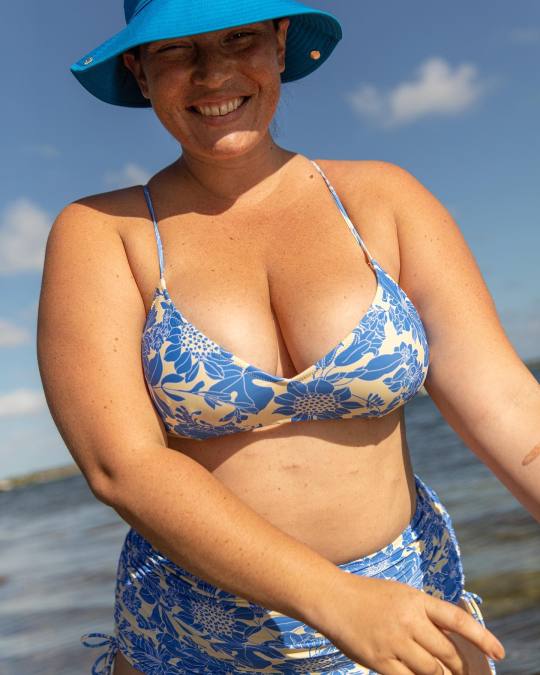#body posture
Explore tagged Tumblr posts
Text

Sedimental Memories 08, Jean-Michel Bihorel
248 notes
·
View notes
Photo



instagram.com/bonjourclem
#bonjourclem#clementine desseaux#curve model#curvy model#body posture#body positive#body positivity#body acceptance#bopobabe#curvy#thick#beach#summer#miami#florida
442 notes
·
View notes
Text



Source: giggle-throughlife
#my edit#self photography#photo of the day#visual body art#conceptualphotography#aesthetic#visual aesthetics#i love it#white shirt#take it easy#cosy mood#pink panty#monday#july 2023#neckless#diamond#stay in bed#body posture#body lines#long time no post#vanilla gold#tumblrpost#artists on tumblr#hello tumblr
150 notes
·
View notes
Text

Lo intente en hacerle de esa forma, es natural! Es como no tener pena en apreciar lo que eres! Con celulitis, cicatrices, marcas de nacimiento todo lo que te hace sentir que es son imperfecciones son los que te hace tu, Tu!
Nadie te va derecho de destruyendo lo que eres! Protégete del los malos tratos con los que no ven como tú quieres que te vean, Si no te amas a ti mismo ¿!cómo diablos vas a amar a alguien?!
#tokachithewarrier2#tokachi#salacia#irena#irena the mermaid#love#tokachi the warrier#soul crash#body posture#body anatomy#renaissance#latín Renaissance#outdoor nudity#drawing nudity
14 notes
·
View notes
Text
Top 10 Causes of Back Pain and How to Prevent Them
Back pain is a common issue that affects people of all ages and lifestyles. Whether caused by poor posture, injury, or underlying medical conditions, it can significantly impact your daily routine. Here, we explore the top 10 causes of back pain and offer preventive measures to help you maintain a healthy spine.
1. Poor Posture
One of the most common causes of back pain is poor posture, especially in people who sit for long periods. Slouching can lead to strain on the muscles and ligaments of the back, leading to discomfort.
Prevention: Always maintain a neutral spine. Invest in an ergonomic chair if you work at a desk, and take regular breaks to stretch and move.
2. Muscle Strain
Overuse or sudden movements can cause muscle strains. Lifting heavy objects improperly or engaging in activities without warming up can lead to strained muscles.
Prevention: Use proper lifting techniques, such as bending your knees and keeping the object close to your body. Regular exercise can also strengthen your back muscles, making them less prone to injury.
3. Herniated Discs
A herniated disc occurs when the soft tissue inside the discs that cushion the spine is pushed out, causing pressure on the surrounding nerves. This can lead to intense pain and limited mobility.
Prevention: Maintain a healthy weight, as excess weight adds pressure to your spine. Incorporating core-strengthening exercises can also help support your spine.
4. Arthritis
Osteoarthritis, a degenerative joint disease, can affect the spine, leading to chronic back pain. This is more common in older adults.
Prevention: Regular physical activity and maintaining a healthy weight can help prevent arthritis from worsening. Low-impact exercises, such as swimming or walking, can reduce the strain on your joints.
5. Sedentary Lifestyle
A lack of physical activity can weaken your muscles, making it easier to injure your back. Prolonged sitting, especially without proper back support, is also a major cause of back pain.
Prevention: Stay active by incorporating regular exercise into your routine. Even light activities like walking or yoga can improve your back health. For chronic pain, consulting a Back Pain Brooklyn specialist can help create a tailored fitness plan.
6. Obesity
Excess body weight puts additional strain on your spine, particularly on the lower back. This can lead to chronic pain and discomfort.
Prevention: Maintaining a balanced diet and staying active can help reduce the strain on your back. Losing even a small amount of weight can make a significant difference in relieving back pain.
7. Injury or Trauma
Injuries from accidents, falls, or sports activities can cause acute back pain. Sometimes, the injury might heal poorly, leading to long-term discomfort.
Prevention: Always wear protective gear when engaging in physical activities, and ensure your environment is safe to avoid falls. If you're recovering from an injury, consider seeing a Back Pain Specialists Staten Island for personalized treatment.
8. Sciatica
Sciatica occurs when the sciatic nerve, which runs from your lower back down your legs, becomes irritated or compressed. This can cause pain that radiates from your back to your legs.
Prevention: Strengthening your core and back muscles can help alleviate the pressure on your sciatic nerve. Additionally, avoiding prolonged sitting and maintaining good posture can prevent flare-ups.
9. Stress and Mental Health
Believe it or not, stress and anxiety can also contribute to back pain. Mental stress can lead to muscle tension, which often manifests in the neck and back.
Prevention: Incorporate relaxation techniques like meditation or yoga into your routine to reduce stress levels. Exercise can also be a great way to combat tension.
10. Sleeping Position
Sleeping in an awkward position or on a mattress that doesn't support your back can lead to discomfort. Poor sleeping posture can strain the spine and cause morning stiffness.
Prevention: Invest in a good quality mattress and pillows that provide adequate support. Try sleeping on your back with a pillow under your knees to keep your spine aligned.
Conclusion
Back pain can arise from various causes, but with the right preventive measures, you can keep your spine healthy and avoid discomfort. From maintaining good posture to staying active and seeking professional advice when needed, small changes in your routine can make a big difference. If you're dealing with persistent back pain, consulting specialists like those at Back Pain Brooklyn or Back Pain Specialists Staten Island can provide you with a personalized approach to treatment.
Taking care of your back is essential to leading a pain-free, active life. By addressing the root causes of your discomfort and making necessary adjustments, you can prevent back pain and enjoy better overall health.
0 notes
Text

Don’t blame me for being so proud 😭 I can finally draw at least a bit well body postures 😭😭😭
0 notes
Text
Anyone else with chronic pain ever get really absorbed in a project and dissociate from your body while you're working but then you finish and you come back to your body and you're just like AAAAAAAHHH! WHAT'S WRONG?? oh yeah. The horrors. Never mind
#my body is ouchie#chronic illness#disability#fibromyalgia#me/cfs#migraine#postural orthostatic tachycardia syndrome#chronic fatigue#chronic pain#gastroparesis#pots#hEDS#ehlers danlos syndrome#hypermobile ehlers danlos#hypermobility#the horrors persist but so do I#the horrors#interstitial cystitis#I no longer desire internal organs#or bones#oof ouch my bones#dysautonomia
6K notes
·
View notes
Text

I've really been enjoying @derinthescarletpescatarian 's Child of a Wandering Star, an amazing first encounter story from the POV of the aliens, and the image of an astronaut being read as a baby star-god was so delicious to me so I had to draw the "hatching" scene.
and because im normal i was like well if im drawing the aliens I need to hunt down mentions of their physical appearance so I can know exactly what they look like and model them after real arthropods. obviously


#i went thru a few designs before settling on this one..i imagined them more ant like but i reallyyy wanted beetle esque horns#i think what i pulled from most for body shape was shrimp actually? to get that upright posture with the horned abdomen#the top started as a small doodle. oops! im still not 100% happy but i need to stop picking at it#'all you draw is glowing god-people' yes. no more questions#child of a wandering star#derinthescarletpescatarian#my art#warlock wartalks#spec bio#coaws
2K notes
·
View notes
Photo

Do you suffer from headaches, neck discomfort, or back pain? The problem could be bad balance! Here are some pointers to correct your balance and avoid these pains: 1. Avoid slouching and keep your shoulders relaxed while sitting up upright with your back against the chair and your feet flat on the floor. 2. Take breaks: If you spend a lot of time sitting down, get up, stretch, and walk around every 30 minutes. 3. Strengthen your core: Supporting your vertebrae and enhancing posture can be accomplished by strengthening the muscles in your back and abdomen. 4. Adjust your workstation to prevent squinting or straining. Make sure your chair, desk, and computer display are at the right height and distance. 5. Stretch frequently: Include regular stretching in your routine with an emphasis on the muscles in your neck, shoulders, and back. Keep in mind that having excellent posture not only makes you feel better, but it also conveys confidence and can help you avoid future injuries. Consult a physiotherapist if you're suffering from persistent discomfort for specialized guidance and care
0 notes
Text
We ask your questions so you don’t have to! Submit your questions to have them posted anonymously as polls.
#polls#incognito polls#anonymous#tumblr polls#tumblr users#questions#polls about the body#submitted may 7#back pain#posture
415 notes
·
View notes
Text
Our favorite British bastard in situations!

Companion piece to the Stanley drawings!
Closeups!






And an extra older sketch featuring a centaur narrator based on @cosmokrill’s drawings of the narrator as a centaur which tells you I made these drawings after little after June 22! Go look at their art it’s so huggable looking!

#tsp#the stanley parable#tspud#tsp narrator#tsp stanley#art#digital art#procreate#fanart#sketch#my art#round and expressive!!#expressions#he would be so expressive if he were human#silly man#doomed by the narrative#companion piece#I needed him to suffer#I also needed him to be ok#he did not sign up for any of this#allusions to different parts and endings of the parable#I will draw him interacting with the bucket don’t worry#it just might be a bit tho b/c finals#centaur#drawing a horse body from memory is certainly a choice to make#big stretch#projecting back problems due to poor posture onto Stanley
328 notes
·
View notes
Text


the drunk/cynic
#les mis#grantaire#can you tell ive never painted hands before 😟#I got lazy and didnt want to paint the whole body that is why his posture is weird#ik this is not how I usually draw him but in order to maximise the bits I dont have to paint I decided to use hair to cover him up LOL#haterart
197 notes
·
View notes
Text
why isn't there much info about coathanger pain with POTS?? or at least why is this not more common knowledge? i don't think i've ever seen anyone talking about this. every time i've asked about it (+other POTS symptoms it comes with in my case) in chronic illness spaces people have suggested everything from fibro, MCAS, a CFS leak, a herniated disc, CCI, etc. but nobody ever said "coathanger pain."
but dysautonomia international posted a silly little graphic on their instagram and now i have my answers to why i was having a ton of symptoms that did suggest a herniated disc but there were no signs of disc herniation upon getting an MRI and for some reason it was triggered by working morning shift/having to be upright for a long time in the mornings. i would get excruciating, searing pain that feels pike a knife has been shoved into the base of my neck and the whole of my upper back would have this icy burning sensation. accompanied by me losing the ability to think straight, losing my coordination, and slurring my speech. i left work crying one morning because of how much pain i was in before i eventually came to the conclusion i couldn't do morning shifts.
that's coathanger pain. my spine is okay (i think...for now, anyway.) according to The Stuff they don't know what causes coathanger pain necessarily but they theorize it has to do with reduced blood flow to those areas of the body (which would track since POTS tends to involve blood pooling in the extremities and such.) it's also not exclusive to POTS and is associated with dysautonomia or orthostatic intolerance in general i think.
One example of the power of obtaining the autonomic history is the Coat Hanger Phenomenon. In people who have neurogenic orthostatic hypotension or orthostatic intolerance, they can complain of pain, or like a charley horse kind of sensation, in the back of the neck and shoulder areas in the distribution that’s like a coat hanger. And it goes away when the person is lying down. That’s an important symptom. And the way I explain it is that the muscles that control your head are tonically active, otherwise your head be falling down all the time. Tonically active. That means they’re using up oxygenated blood all the time. Well suppose you’re in a critical situation where there’s a drop in blood flow at the delivery of oxygenated blood to the head. In that situation these muscles are not getting enough oxygenated blood. They’re tonically active, so they’re producing lactic acid and you get a charley horse, just like you’d have a cramp anywhere else. It’s a skeletal muscle thing. So, I think when somebody complains of Coat Hanger Phenomenon, that’s a very important sign or symptom. And that is not invented. That’s a real phenomenon. It points to ischemia to the skeletal muscle holding your head up.
(Dr. Goldstein, The Dysautonomia Project)
worsening cognitive dysfunction, slurred speech, and worsening coordination because blood's not getting to my brain. bordering on emergency-room-level pain in my upper back and neck because not enough blood is getting to those parts of my body. got it.
anyway, i legit have NEVER seen this discussed until recently and i thought i should share.
#postural orthostatic tachycardia syndrome#pots syndrome#potsie#dysautonomia#chronic illness#j#body log
1K notes
·
View notes
Text
A Novel Lightweight Wearable Device to Perform Balance Exercises at Home - Technology Org
New Post has been published on https://thedigitalinsider.com/a-novel-lightweight-wearable-device-to-perform-balance-exercises-at-home-technology-org/
A Novel Lightweight Wearable Device to Perform Balance Exercises at Home - Technology Org
Maintaining balance and posture is quite a complex skill, even though it comes naturally to most people. However, postural control tends to worsen with age due to various reasons, such as muscle weakness coupled with changes in vision and sensory input. This explains why older people are much more prone to falling and suffering fall-related injuries than younger individuals. Approximately 40% of older individuals have been reported to fall at least once a year.
Image title: Balance training using a wearable device to improve reactive postural control Image caption: (Left) Pneumatic artificial muscles in the wearable device generate small disturbances. By holding a posture against these disturbances, a user can improve their reactive postural control. (Right) Plots showing how the displacement of the center of pressure of the user’s soles in the mediolateral direction (D-COPML) significantly decreased in the group that trained with the device (WBED) compared to the ‘sham’ group. An unexpected perturbation was generated at 0 seconds. Image credit: Masataka Yamamoto from TUS Japan License type: Original content
In this regard, over the past few decades, scientists have found that postural control can be improved through various exercises, which in turn helps prevent falls. Training and cultivating the ability to perform compensatory postural adjustments (CPAs) to counteract the effects of unexpected external perturbations is possible. Although scientists have come up with specialized devices to perform balance exercises involving unexpected perturbations, these machines are generally bulky, expensive, and complex to use, rendering them suitable for clinical settings only.
But could there be a more practical way to perform these exercises comfortably at home? In a recent study published in IEEE Journal of Translational Engineering in Health and Medicine on 31 August 2023, a research team led by Assistant Professor Masataka Yamamoto from Tokyo University of Science (TUS), Japan, and including Professor Hiroshi Takemura, Mr. Daiki Yoshikawa, and Mr. Taku Washida from TUS, as well as Professor Koji Shimatani from the Prefectural University of Hiroshima, explore this question. For their research, the researchers developed an innovative wearable balance exercise device (WBED) and investigated its effects on CPAs and reactive postural control.
The proposed wearable device uses two pneumatic artificial muscles (PAMs) to generate unexpected perturbations. These PAMs, which resemble a pair of hollow shoulder straps or suspenders, can be forced to extend or contract by regulating the air pressure inside them. For this purpose, the WBED includes a set of electronically controlled valves connected to a can of compressed gas. This enables a computer program or smartphone application to control the valves and quickly fill or empty either PAM with gas, producing a force that pulls the user sideways in a specific direction.
To test whether WBED can truly improve reactive postural control, the researchers recruited 18 healthy adult males and divided them randomly into two groups: WBED and sham. All participants first underwent an evaluation of reactive balance. They had to hold a tandem stance for one minute while air cylinders on both sides of the hips pushed them laterally at unpredictable moments. The participants in the WBED group then performed a few rounds of balance training using the proposed device, while the sham group underwent the same exercises without unexpected perturbation. Lastly, a second evaluation was performed to check for improvements in postural control.
The researchers measured several variables as outcomes during the evaluations, including peak displacement, time at peak displacement, peak velocity, and root mean square of the soles’ center of pressure. Notably, participants in the WBED group exhibited lower displacement and peak velocity after exercising with the device. “Our results prove that perturbation-based balance exercises using WBED immediately improve the subjects’ reactive postural control,” remarks Dr. Yamamoto, satisfied with their findings. “Wearable exercise devices, such as the proposed WBED, could contribute to the prevention of falls and fall-related injuries.”
In the near future, the proposed device could revolutionize how people with a high tendency to fall perform balance training, especially in countries with a steadily aging population like Japan. “We designed WBED to be lightweight, portable, and easy to use both at home and in clinical settings. It weighs only 0.9 kg and takes less than three minutes to put on,” highlights Dr. Yamamoto. By training regularly with WBED, older individuals and people undergoing physical therapy can efficiently improve postural control and responsiveness, preventing falls and improving their overall health. Notably, WBED could also be useful for athletes who want to improve their balance.
Source: Tokyo University of Science
You can offer your link to a page which is relevant to the topic of this post.
#2023#aging#air#artificial#body posture#computer#devices#direction#easy#effects#engineering#Exercise#Future#gas#Health#Health & medicine news#how#injuries#it#Japan#LED#LESS#Link#Medical devices#Medicine#muscle#muscles#One#population#portable
0 notes
Photo

Mac Baconai (@Macbaconai)
162 notes
·
View notes
Text

omg where'd you get your top it looks like it would fall apart after one cycle in the wash
#i need you to imagine my very specific vision for yakumo piggybacking on eiden ok:#eiden is such a playful lil scamp so idk one day he wants to test his strength by carrying yakumo#yakumo's always carrying passed-out-eiden after marathon sex sessions so. how heavy can a vertical noodle possibly be#but yakumo's scared he's too heavy or that he'll be too awkwardly shaped (whatever that means) for eiden to carry#so while eiden is crouched down in front of yakumo beckoning him to climb aboard#yakumo stiffly positions himself . but . his feet barely leave the ground#and their bodies aren't touching much.. as in#yaku's knees are gripping at eiden's midsection instead of scooching up close#because he doesn't want his crotch right up against eiden's back LOL#and he's very lightly touching eiden's shoulders with his hands#but since yakumo's body is so distant/unevenly perched.. it actually makes it tougher for eiden to carry him#so eiden has to coax yakumo into getting MUCH CLOSER against his body#'come on . right up against my back. it'll make it easier!!'#'no need to be shy 😏😙'#'that's right! now put your arms around my neck. there we go!!'#after yakumo loosens up and loses rock posture... he indeed becomes easy to carry#so eiden gets to strut around proudly with a yakumo on his back for a bit#this whole thing was inspired by me wanting to see oli bridal carry yakumo LOL#it would be sooooooo easy . oli is sooo strong and yakumo sooo flimsy. just scoop him up. kiss his forehead#tbh he could lift yakumo one handed but the bridal carry is more comfortable and oli is Considerate#then when i had oli AND eiden carrying yaku in my head.. i started imagining the others#something about.... yakumo being tossed around by bottoms#fills me with unprecedented amounts of delight#GARU!! SPIKE HIM ONTO THE GROUND LIKE THE ALMONDBALL#yakuoli#yakuei#yakumond#yakugaru#yakukaru
112 notes
·
View notes